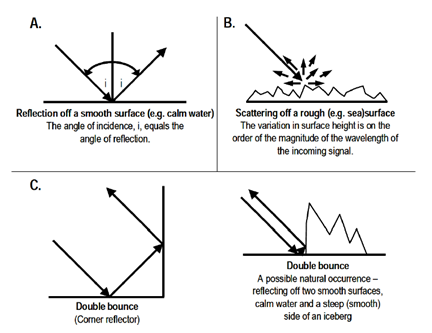Icebergs
Iceberg maps covering the waters around Greenland, divided into 19 sub-regions – you can choose between the individual regions on the clickable map to the left.
The maps are updated twice daily (at 00:00 UTC and 12:00 UTC), showing the latest available satellite-based observations.
Satellite coverage at fine (10m) spatial resolution is indicated with a slightly darker blue color than coverage at coarser (40 m) spatial resolution. The maps also display the numbers of icebergs detected within the light- and dark blue areas, respectively.
Pure white areas are sea-ice. Please note that due to detection uncertainties, iceberg detection is not carried out within sea ice infested areas.
The use of radar based satellite technology in conjunction with computer algorithms designed for target detection makes it possible to detect icebergs around Greenland on an automated basis. The iceberg maps shown at polarportal.dk cover the waters around Greenland. The area is divided into 19 sub-regions (iceberg maps), selectable from the clickable map. The maps are updated twice daily (at 00:00 UTC and 12:00 UTC, respectively), showing the latest available satellite-based observations.
Depending on the scanning mode of the satellite sensor, at the time of acquisition, the sea surface will be scanned at fine- or at more coarse spatial resolutions (10 m and 40 m, respectively). In the maps, satellite coverage at fine spatial resolution is indicated with a slightly darker blue color than is coverage at coarser spatial resolution. In the coastal regions where numerous small icebergs (horizontal length < 40-60 m) are present, there will often be occasions where more icebergs are detected at fine resolution, than there would have been at coarser resolution. Due to rugged structures in the sea ice (such as ridges and rubble fields) iceberg detection is only carried out in open-water areas. Please be aware that under particularly difficult conditions (e.g. in situations with strong winds) false iceberg detections may occur. Sometimes ships may also be misjudged as icebergs by the detection algorithm.
Each iceberg map is composed on the basis of one or (typically) more satellite scenes from the two identical ESA Sentintel-1 A- and B satellites. The two satellites scan the sea surface utilizing Synthetic Aperture Radar (SAR). SAR sensors are so called active sensors, which means that a SAR satellite both emits radar signals and measures the fraction of the signals that returns to the satellite. This stands in contrast to “conventional” optical satellites that only “passively” measure sunlight reflected from the Earth’s surface. Because radar signals are able to penetrate clouds, SAR based satellite monitoring technology works both day and night and is insensitive to cloud cover. The figure below roughly depicts how a radar-pulse is emitted from the satellite in an oblique angle towards the sea surface and how it is reflected/scattered depending on the state/type of the surface. Part C (bottom part of the figure) shows that if the pulse hits a large obstacle (such as an iceberg or a ship) most of the signal is reflected back to the satellite (by the double bounce effect).
Sentinel-1 satellite SAR data are accessible through the EU Copernicus programs. Development of the specific iceberg detection algorithms has been carried out within the Copernicus Marine Environment Monitoring Service (CMEMS). For more information see marine.copernicus.eu, here a large portfolio of oceanographic data (incl. iceberg concentration around Greenland) is freely available.









